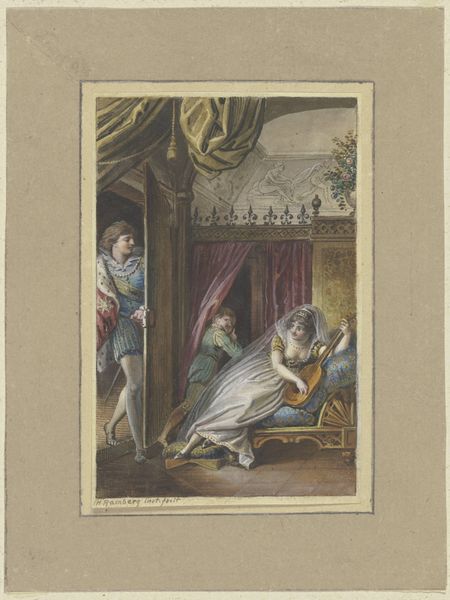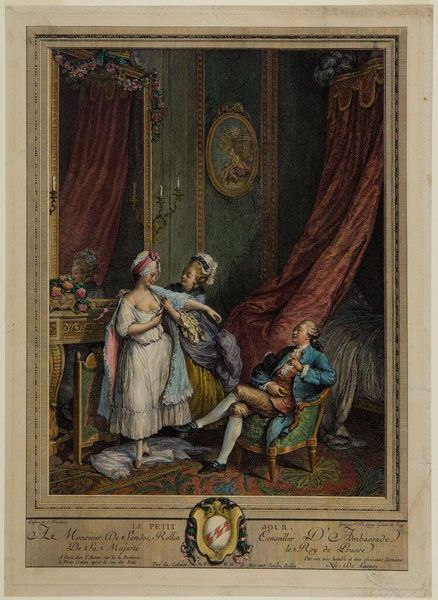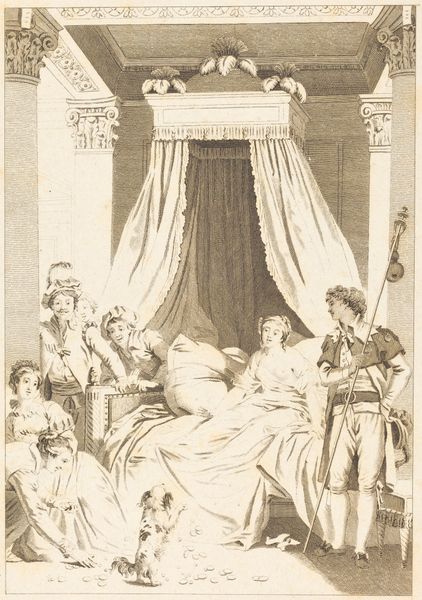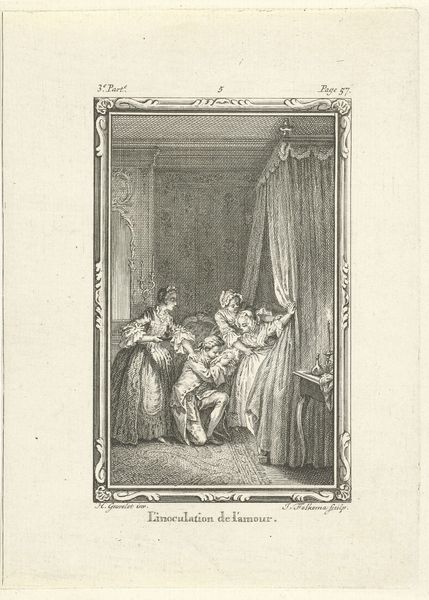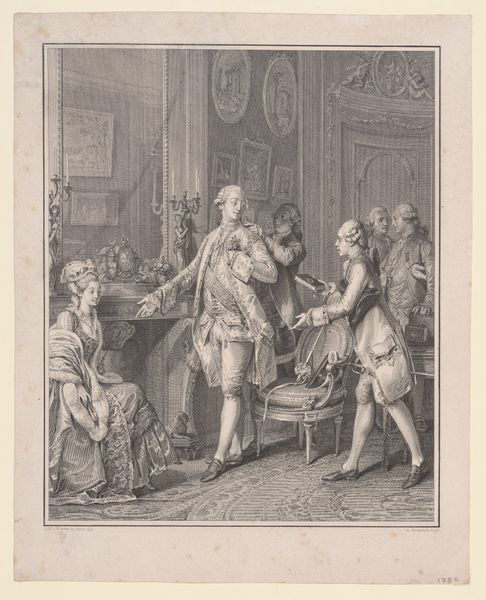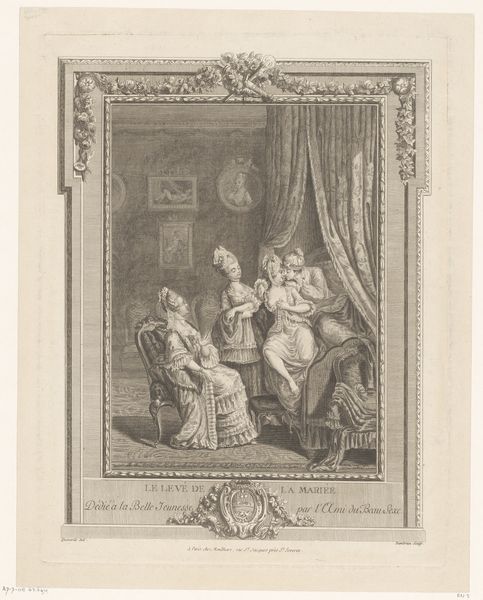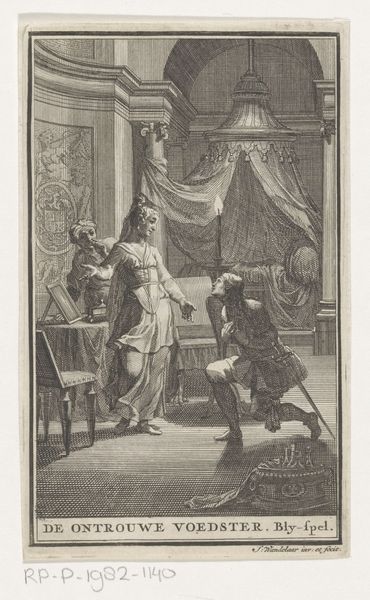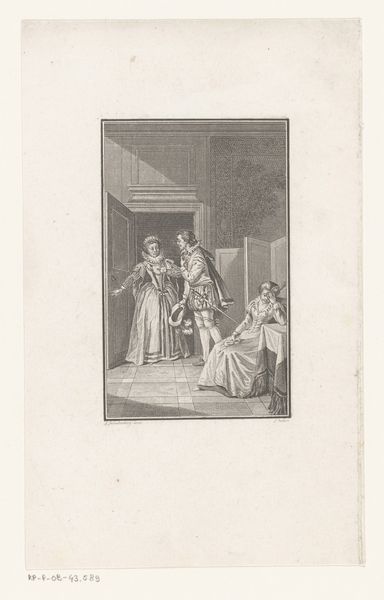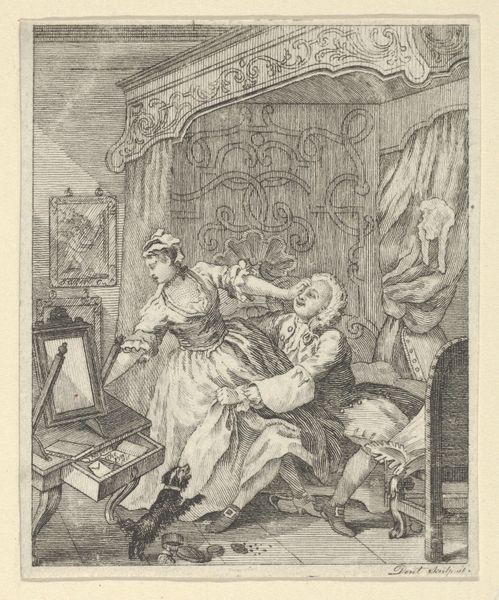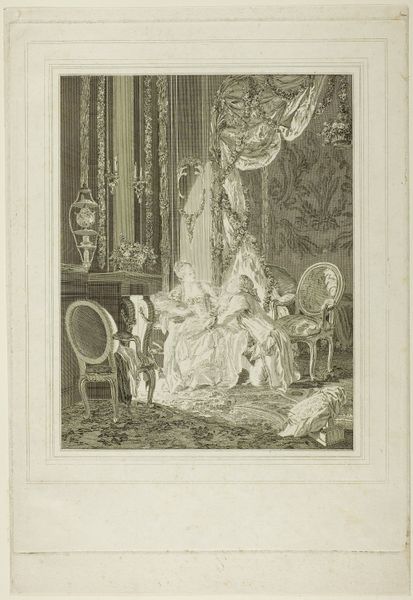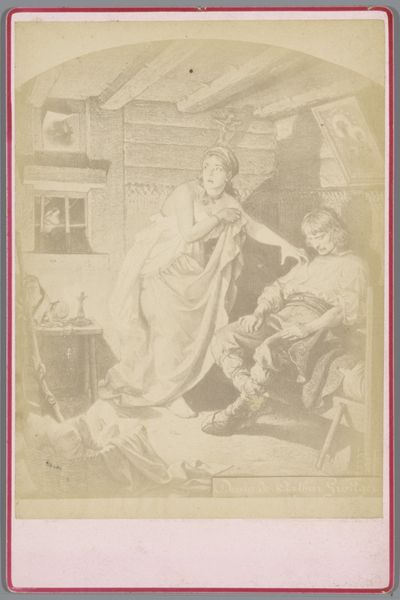
The Continence of Bayard from a set of The History of France 1788 - 1792
0:00
0:00
painting, watercolor
#
portrait
#
neoclacissism
#
painting
#
watercolor
#
genre-painting
#
history-painting
#
academic-art
#
decorative-art
Dimensions: 12 ft. 4 in. × 8 ft. 6 in. (375.9 × 259.1 cm)
Copyright: Public Domain
Editor: This watercolor painting, "The Continence of Bayard," created between 1788 and 1792 by Louis Jean Jacques Durameau, depicts a scene from French history, or at least seems to! It looks… theatrical almost, staged. I wonder what to make of the central figures here, with that person kneeling? How do you interpret this work? Curator: The key to unlocking this image lies in understanding its symbolic language and its connection to Neoclassical ideals. Notice the architecture, the classical drapery, and even the poses themselves. They evoke a sense of order and virtue, ideas the Neoclassical movement very much emphasized in opposition to the perceived decadence that preceded it. But what strikes you most about the central grouping of figures? What emotional cues are we being offered? Editor: Well, the woman standing seems rather… detached? And the kneeling figure is practically begging, perhaps pleading for money that the nobleman is handing over. It's the kind of gesture one might expect from a king bestowing riches upon a humble servant. Curator: Exactly! Now, consider "continence" not just as abstinence, but as restraint and self-control. Bayard, the nobleman, embodies this virtue by offering money in a controlled, measured way. He doesn’t flaunt his wealth, and perhaps that’s why that lady, or damsel, remains aloof. There is dignity on display, but a coolness as well. Note how those characteristics of the French Neoclassical school appear not just in the rendering of form, but in this very restrained scene. Editor: So the act itself is less about charity and more about Bayard showcasing his own virtuous character? It’s interesting to see the artist use that Neoclassical style to make a comment, even indirectly, about wealth, power, and self-image. Curator: Precisely. And that interplay is, for me, what keeps history painting endlessly fascinating. How artists and patrons co-produce images infused with meaning to suit a new political or philosophical age. What do you take away most from this short look, after all this? Editor: I never considered that symbols could work so hard to bolster one’s position within that philosophical movement and what was meant to communicate.
Comments
No comments
Be the first to comment and join the conversation on the ultimate creative platform.
